Read More

Skip Setup Headaches and Start Your Project Fast - Download Free Boilerplates
We Analyzed 100+ Software Projects – Key Insights on Cost and Timelines

Prachi Palkhiwala
![[object Object]](https://d2ms8rpfqc4h24.cloudfront.net/Maitray_gadhavi_855bd2c83a.png)
Maitray Gadhavi
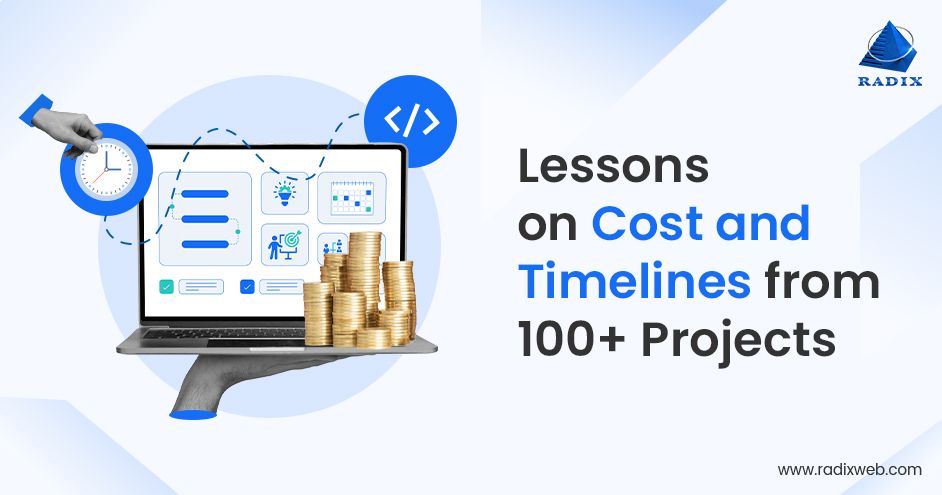
ON THIS PAGE
What 100+ Projects Taught Us About Software Delivery 75% of software projects fail. For enterprise leaders, that’s not a statistic but a strategic risk. At Radixweb, our experience with software projects has been different. To find out why, we analyzed 107 enterprise projects (2022–2024). Here’s what stood out:● Vague scope causes 4.4x more budget deviation than clear requirements.● Weekly check-ins cut cost deviation by 2.2x vs. daily standups● Emerging tech drives value, but needs tighter control● Cross-functional teams = more balanced cost and time outcomes● Time and cost overruns don't always happen together.These aren’t blog-born theories. They’re field-tested lessons from real delivery. If you're investing in software soon, read on to uncover more insights from our in-depth research.
Most software projects don’t go as planned. There are more than enough software development statistics that tell you that.
- Timelines shift.
- Budgets balloon.
- Priorities get rewritten halfway through.
And somewhere along the way, leadership confidence takes a hit.
At Radixweb, we’ve delivered over 500+ software projects. And while we’ve seen our fair share of complexity as a software development company, majority of our projects have been successful. We have high delivery reliability, tighter budgets, and greater predictability than what industry stats claim.
This made us wonder: What are we doing differently? How are our outcomes better than industry averages? To find answers to these questions, we dug into the data and analyzed 100+ software development projects. And in this blog, we share the 5 key insights from our analysis.
Read on.
Disclaimer: This isn't a sales pitch. Every client we have worked with has asked us: What should I expect in terms of cost and timelines? We have published guides on estimating software development costs and software development timelines. But these guides didn’t tell readers what they could expect in terms of overruns and delays. So, in December 2024, we did this analysis as an internal exercise to answer those questions honestly. Now, we’re sharing it to help decision-makers looking for software development companies plan better - whether or not you work with us.
How We Approached This Analysis
We’ve delivered 4,200+ software projects across 25 years. But for this study, we didn’t just pull random data from the archives.
Instead, we took a deliberate approach to narrow it down to 107 projects that would reflect real, recent, and relevant patterns in software delivery.
Here’s how we got from 4,200 to 107 projects:
Step 1: Included only post-COVID projects (Jan 2022– December 2024)
We focused exclusively on projects that were started after 1st Jan 2022 and completed before 31st December 2024. This is because the post-pandemic era is when everything changed:
- Remote collaboration became standard
- DevOps practices matured rapidly
- Teams adopted async workflows
- AI started influencing development cycles
Including pre-COVID data would have distorted patterns that are unique to today’s delivery realities.
Step 2: Removed outliers
To maintain consistency in analysis, we excluded:
- Very small-scale projects (like microsites, UI-only redesigns)
- Very large, multi-year digital transformation programs
The scope, timeline, and cost of such projects are too diverse to compare meaningfully.
Step 3: Focused only on core software projects
We filtered down to enterprise software builds, including:
- SaaS modules
- Product/platform development
- Internal enterprise tools
- Custom business software
We excluded projects like:
- eCommerce platforms
- Standalone websites
- Mobile apps
- Integration and optimization projects
- Migration solutions
This is because the time, cost, and teams for these projects are structurally different.
What We Studied: The 6 Key Factors
For each of the 107 selected projects, we evaluated 6 important software development metrics to understand delivery health.
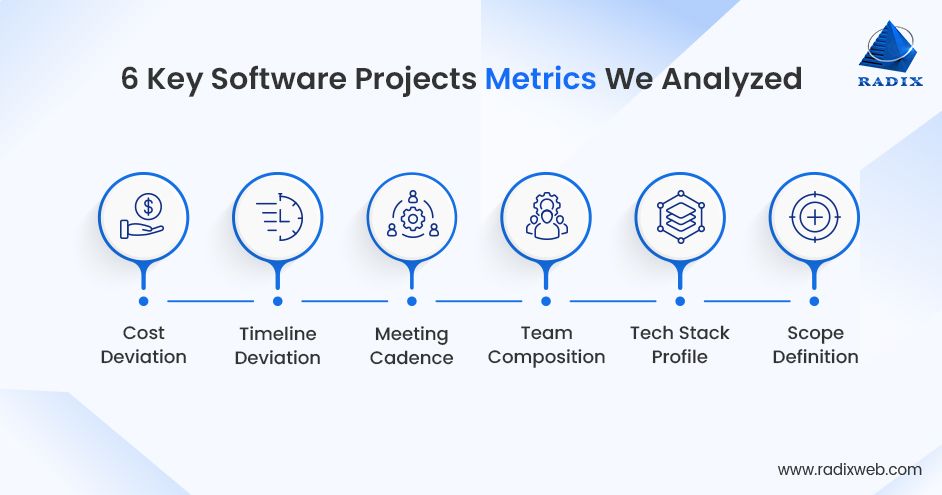
1. Cost Deviation
How did the actual cost compare to the initial software cost estimation?
- For fixed-cost projects: We tracked internal hours spent vs. estimated hours. Even if the client wasn’t billed more, we noted the overrun.
- For variable billing models (Time & Material, Milestone-based): We compared projected vs. invoiced amounts.
Also Read: Choosing the Right Engagement Model for Your Software Project
2. Timeline Deviation
We analyzed how close projects came to their committed software development project timeline estimation.
- Measured % deviation from the original schedule
- Tracked where delays came from — delivery-side vs. client-side
- Slow feedback and other client-side delivery delays were ignored for the purpose of this analysis.
3. Meeting Cadence
We mapped out how frequently teams communicated and whether that influenced delivery success.
- Ad hoc: Meetings only when required
- Monthly check-ins: One scheduled meeting every month
- Weekly reviews: One scheduled meeting every week
- Daily stand-ups/syncs: Scheduled meetings everyday
4. Team Composition
We categorized how software development teams were built to see how role diversity impacted outcomes.
- Tech-only teams: Developers + Project Managers
- Cross-functional teams: Developers, Quality Analysts or Testers, Designers, DevOps Engineers, Project Managers
5. Tech Stack Profile
We classified each project based on its foundational technologies.
- Regular tech: Legacy stacks like .NET Framework, PHP, Java EE, MERN/MEAN stacks
- Modern tech: Cloud-native, containerized apps, API-first, CI/CD, AI-infused components
6. Scope Definition
We assessed how clearly the project scope was defined at kickoff.
- Low scope: Vague requirements, evolving midstream
- Medium scope: Clear functional overview, some openness to change
- High scope: Detailed specs, sprint plans, wireframes, and defined delivery milestones
Together, these six parameters helped us decode what affects delivery quality and how.
Key Findings from 100+ Projects
Ideal software delivery performance is not a product of good code alone. It’s a reflection of leadership decisions made before the first sprint begins. Here are the key insights from our analysis of 100+ custom software development projects
1. Scope Clarity Is the Strongest Predictor of Project Success
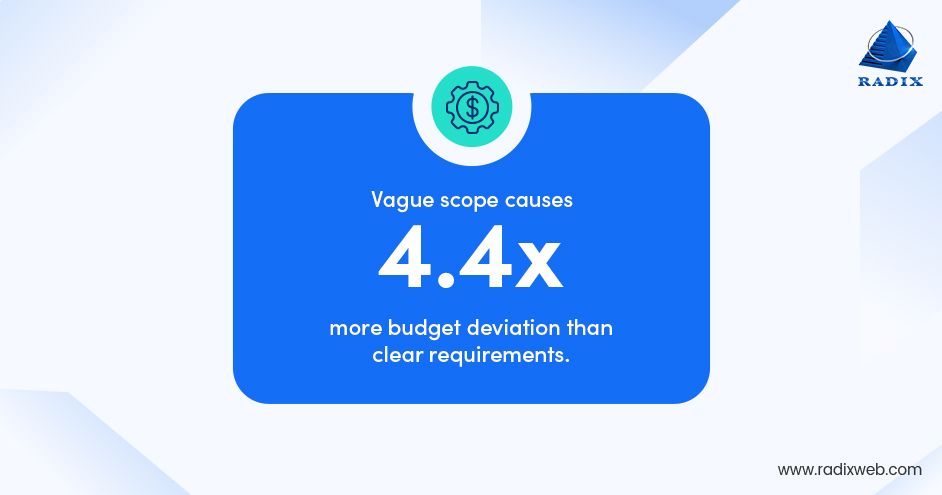
The clearest takeaway from our analysis was this:
"Poorly defined scopes are the biggest contributors to both cost and time overruns."
| Scoping Level | Cost Deviation (%) | Timeline Deviation (%) |
|---|---|---|
| High | 1.47 | 2.97 |
| Medium | 4.28 | 7.61 |
| Low | 6.41 | 1.96 |
Projects that started with high scope clarity showed minimal deviation from the initial software development budget (1.47%). And they were completed on schedule with near-zero delay. In contrast, projects with low scoping experienced nearly 6.5% budget overruns. Even when they were completed on time, 98% of the time.
But how does unclear scope impact software development costs and timelines?
Well, unclear scope leads to rework, scope creep, and misaligned priorities. All this increases both cost and timeline deviation in software projects.
What you need here is high scope clarity, which means:
- Detailed specifications
- Well-defined acceptance criteria
- Visual wireframes
- Sprint breakdowns
This reduces software development complexity ensuring fewer hiccups in delivery.
Now, as a decision-maker, skipping the discovery phase may feel like a shortcut. But it often becomes the costliest detour. Poor scope clarity magnifies even minor changes into major delays. That’s why it is an important part of the software development process and more than just a handoff ritual.
To give context, here’s a comment from one of our clients who rushed past the discovery stage first. But later, after recalibrating the scope, the initial hiccups were gone.
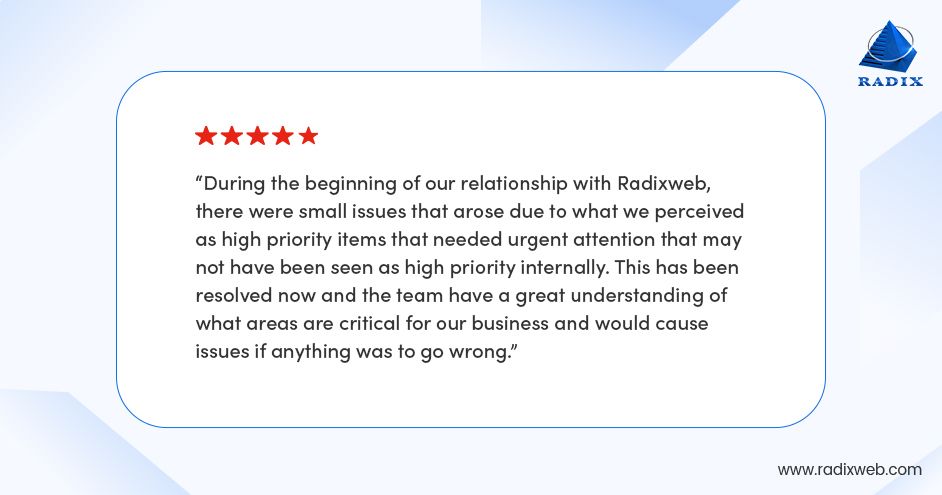
Read the client’s complete review here.
Pratik Mistry, EVP – Technology Consulting, explains why discovery isn’t a formality but the foundation for aligning business goals with delivery outcomes:

2. Communication Cadence Matters More Than Frequency
Contrary to popular belief, more meetings do not always mean better project outcomes. In fact, projects with daily stand-ups (often assumed to be the most agile!) show the highest cost and time deviation.
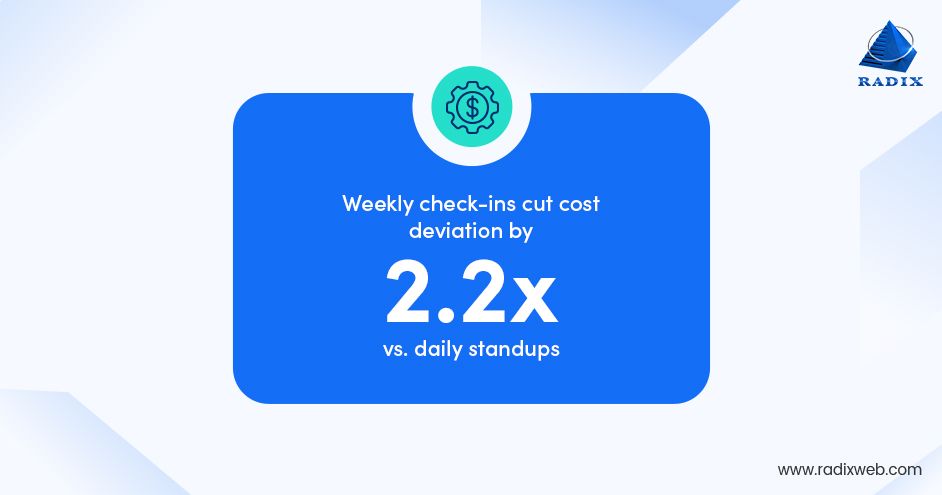
| Meeting Schedule | Timeline Deviation (%) | Cost Deviation (%) |
|---|---|---|
| Ad hoc | 4.28 | 1.60 |
| Daily | 6.90 | 6.75 |
| Monthly | 5.74 | 4.37 |
| Weekly | 3.88 | 2.22 |
Wondering how daily standups hurt more than help in software delivery? Well, over-communication often leads to micromanagement, decision fatigue, and reactive shifts.
Meanwhile, projects with structured weekly check-ins demonstrated the best time and cost outcomes. For such projects, the cost deviation was at just 2.22% and timeline deviation below 4%.
What this shows is that effective communication isn’t about frequency but structure. And our clients agree...
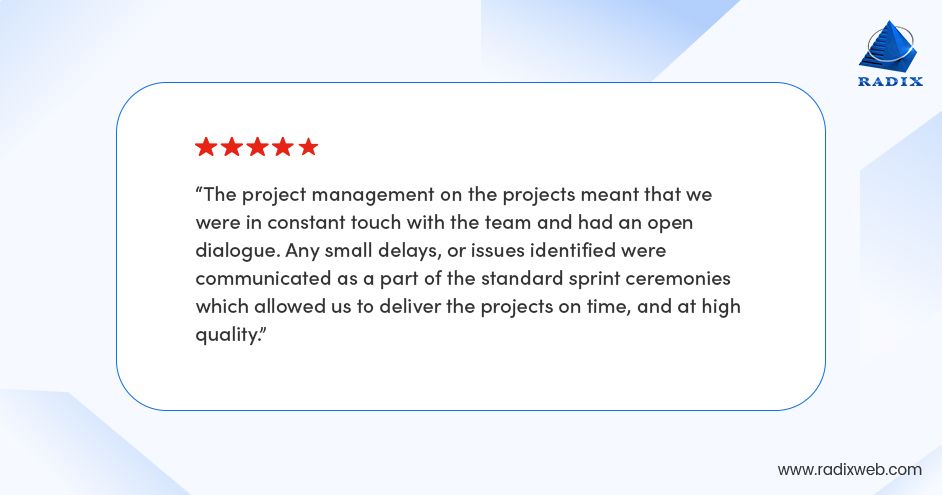
Read the complete client experience here.
As a business leader investing in enterprise software development, you should push for rhythm, not noise. Weekly checkpoints, clear action items, and documented decisions are often far more productive than daily syncs with no strategic lens.
3. Emerging Tech Brings Benefits but Introduces Uncertainty
If you also plan to follow software development trends and leverage emerging technologies, here’s what you should know:
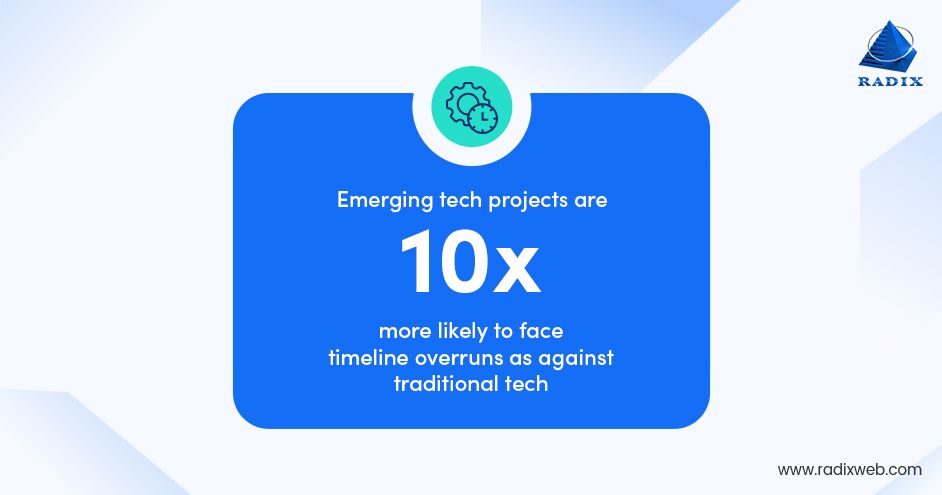
Yes, projects using AI components, containerized architectures, and cloud-native environments carried a higher risk of time and budget overruns.
| Tech Stack | Timeline Deviation (%) | Cost Deviation (%) |
|---|---|---|
| Emerging Tech | 10.51 | 6.53 |
| Older Tech | 1.03 | 1.89 |
As evident, the cost overruns for projects using emerging tech rose to 6.5% and timelines slipped by over 10%. Now, this is not because these technologies are flawed or because the team isn't skilled.
It is because these technologies often involve unknowns like:
- Undocumented edge cases
- Integration complexity
- Evolving infrastructure needs.
And this is in line with Gartner predicts for 50% of emerging tech projects till 2028.
So, is it always expensive and risky to invest in emerging tech for software development?
In some cases, yes. But the upside? When managed well, these technologies can create long-term competitive advantages like scalability, speed, automation, and smarter data flows.
That’s why we’re seeing a growing number of clients deliberately choose modern tech stacks because the rewards are worth the investment.
To unlock the full potential of emerging tech without falling into the trap of overruns, decision-makers should:
- Allocate ample discovery time
- Use phased rollouts
One our end, we make sure that our team has hands-on expertise in using all modern tech stacks and we use more detailed and thoughtful project management practices.
Because innovation is important, but only when supported by readiness and risk mitigation.
4. Team Composition Must Match Complexity Not Project Size
Smaller projects often default to lean teams. Clients usually only hire software developers and a project manager. But our data revealed a hidden risk - tech-only teams on small-scale projects overshot budgets by over 13%. Even when they met delivery timelines.
| Project Scale | Team Structure | Cost Deviation (%) | Timeline Deviation (%) |
|---|---|---|---|
| Large | Techno-functional | 3.46 | 2.15 |
| Tech-only | 0.76 | 3.07 | |
| Medium | Techno-functional | 1.90 | 8.10 |
| Tech-only | 3.76 | 6.39 | |
| Small | Techno-functional | 7.42 | 8.82 |
| Tech-only | 13.48 | 0.43 |
In contrast, cross-functional teams — with QA, UX and DevOps engineers — delivered more balanced results. Especially on mid- to large-scale builds.
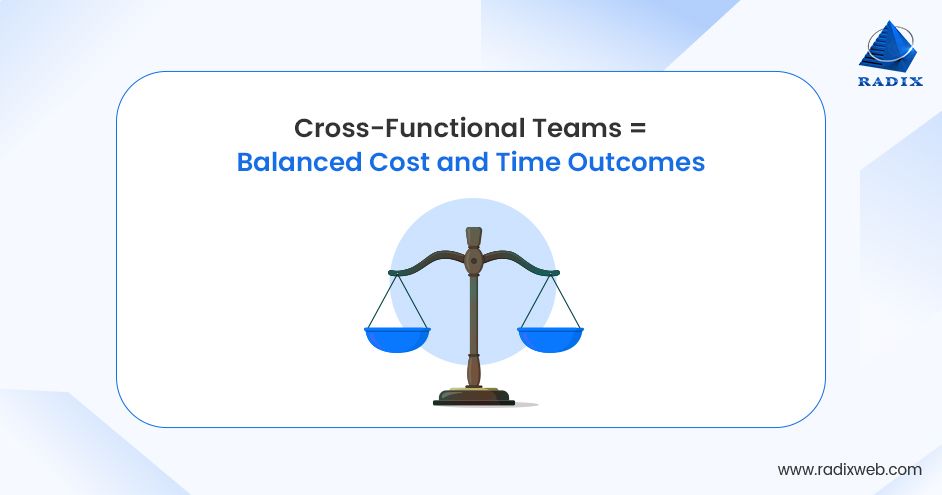
This is contrary to some claims including that from Harvard Business Review that cross-functional collaboration stalls progress.
But do small software projects really need cross-functional teams? Absolutely, especially if quality and efficiency matter.
The takeaway? Lean doesn’t always mean efficient.
When planning your software development teams, don't focus on the least number of people can make it work. Also consider what perspectives are required to align business logic with technical output. Functional oversight and QA shouldn’t be optional. Instead, they are necessary guardrails for both quality and cost control.
5. Cost and Time Deviations Don’t Always Go Hand in Hand
If a project is delayed, it will have cost overruns too.
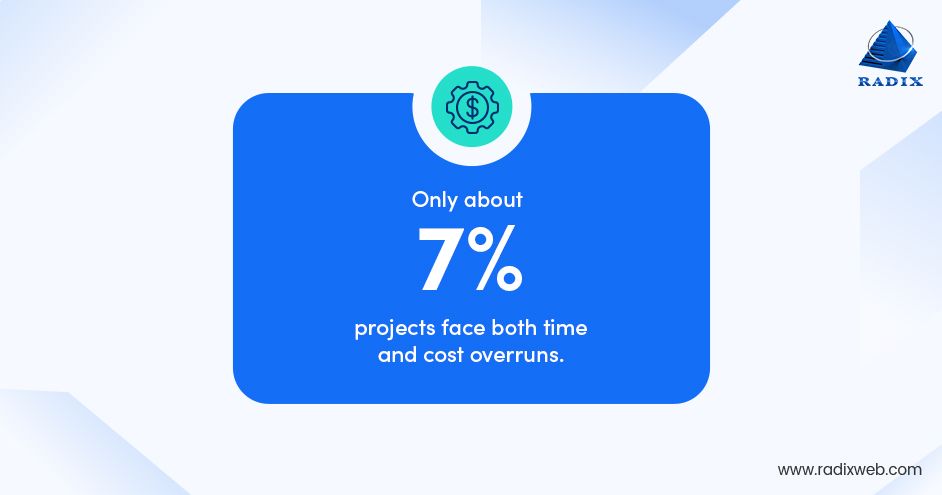
This is a common assumption in software development circles. However, our in-depth analysis tells us otherwise. It is one of the more nuanced findings of our study that time and cost deviation are not always correlated.
| Deviation Type | Large (%) | Medium (%) | Small (%) | Total (%) |
|---|---|---|---|---|
| No Deviation | 50 | 53.8 | 47.6 | 51.4 |
| Only Cost Deviation | 35.3 | 25 | 19 | 27.1 |
| Only Time Deviation | 11.8% | 13.5 | 19 | 14.01 |
| Both Time & Cost Deviation | 2.9% | 7.7 | 14.3 | 7.4 |
Some projects went past their timelines but still stayed within budget. Others were delivered on time but at a higher cost than expected.
This means we (us and our clients) need to manage time and budget as distinct variables. And have separate controls and contingency plans for both.
To that end, we offer in-depth software development consulting. During the consulting phase, we walk you through the various delivery models. And help you find the one that minimizes your risk of both cost and time overruns.
Interestingly, mid-sized projects had the most time and cost deviations.
Wondering why do mid-sized software projects struggle with both time and cost overruns?
That’s because they’re often underestimated. Mid-sized builds are complex enough to need serious planning but small enough to skip it. Without the right scope, team mix, or delivery guardrails, they’re the most likely to derail on both fronts.
If there's a single thread running through all these insights, it's this: Software project success is shaped by business decisions as much as by engineering execution.
For decision-makers planning their next software investment, here's an important thing to remember: Success isn't just about shipping fast. It's about building with clarity and leading with alignment.
Turning Insights into Strategic Advantage
Between January 2022 and December 2024, we ran a deep internal study across 100+ software projects — not to showcase perfection, but to uncover patterns, software development challenges, and actionable insights.
Today, in July 2025, we’re not just sharing the results — we’re showing you what we’ve already done with them.
At Radixweb, these findings didn’t just sit in a report. They’ve been fully absorbed into how we scope, plan, and deliver projects. These aren’t "next steps" — they’re now standard practice:
Measure twice, cut once
Scoping is the first, non-negotiation part of our process. Projects – no matter what size – now begin with richer, deeper scoping ensuring clarity before a single line of code is written.

Read the complete client feedback here.
Dynamic team sizing
No bloated teams. No under-powered squads. Every project gets a lean but dedicated software development team tuned to its complexity and phase, delivering both agility and efficiency.

Check out the complete experience here.
Weekly meetings that drive action
We’ve replaced routine check-ins with outcome-focused cadences. Progress isn’t just monitored, it’s actively unblocked, week after week.

Read the complete review here
Maturity meets innovation
From GenAI pilots to cloud-native builds, we apply enterprise-grade planning and software development risk management, even to emerging tech, keeping your project both future-ready and risk-aware. That's the 1st step to realizing true software development ROI
Agility through co-planning
We don’t vanish after kickoff. Midstream realignment is baked into our engagement model, ensuring we move with you, not against you.
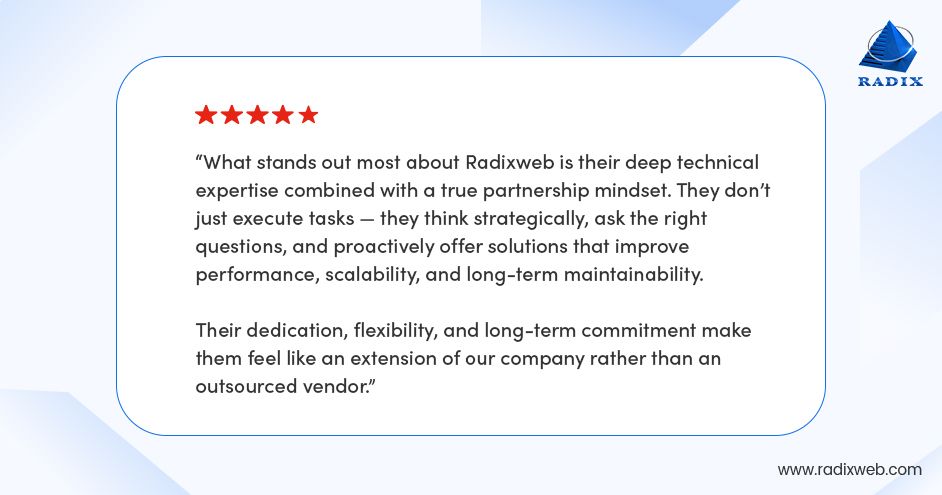
Read the complete review here
Why Does All This Matters for You?
We hesitated before making this internal analysis public. After all, talking about cost overruns and timeline slips isn’t the kind of thing vendors brag about.
But we’re not just vendors. We’re delivery partners.
And trust, to us, is worth more than polish. So, we chose transparency because what matters most isn’t where we stumbled. It’s how we’ve built systems to prevent those stumbles from recurring.
Today, when you engage with Radixweb for software development,
- You’re not a test case. You’re working with delivery models sharpened by real-world lessons across 100+ projects.
- You don’t inherit our learning curve. You benefit from it through mature scoping, calibrated teams, and structured communication.
- You’re backed by preparedness. Not promises, but proven systems that help us navigate change, mitigate risks, and keep momentum.
We’ve earned long-term trust by doing the quiet work of tracking, measuring, and refining how we operate. And that trust shows in details like:
- Our longest-standing clients have stayed with us not for months, but for years.
- We have a client satisfaction score of 98%
- We have straight 5-star client reviews across platforms
Ready To Build With ConfidenceIf you’ve experienced missed timelines, vague roadmaps, or shifting scopes with past vendors, we understand your caution. But with Radixweb, you’re not stepping into uncertainty. You’re saying yes to strategic plans for software success. Our team of expert software developers, led by expert project managers, backed by strong QAs, and guided by our 25-year journey, are all set to meet and exceed your expectations. Ready to build your software solution with confidence? Schedule a no-cost, no-obligation strategy consultation to get started.
FAQs
What should I look for when choosing a software development partner?
How do I get an accurate estimate for software development costs?
How detailed should the project scope be before kickoff?
What engagement models do software development companies offer?
How often should we communicate during the project?
Ready to brush up on something new? We've got more to read right this way.





